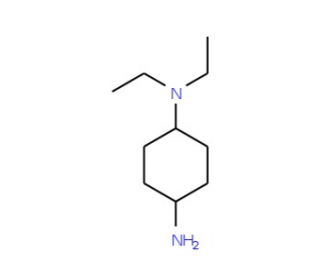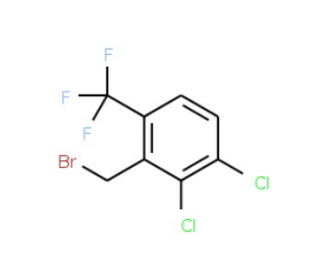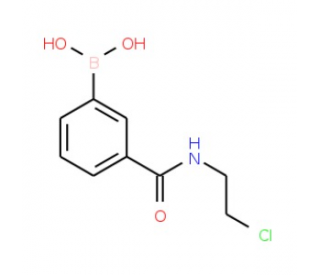詳細說明
Purity
>85%, by SDS-PAGE under reducing conditions and visualized by Colloidal Coomassie? Blue stain at 5 μg per lane
Endotoxin Level
<1.0 EU per 1 μg of the protein by the LAL method.
Activity
Measured by its ability to transfer phosphate from phospho(enol)pyruvic acid monosodium salt hydrate (PEP) to adenosine 5'-diphosphate sodium salt (ADP). The specific activity is >25,000 pmol/min/ug, as measured under the described conditions. See Activity Assay Protocol on .
Source
E. coli-derived Leu47-Ser574, with N-terminal Met and 6-His tag
Accession #
N-terminal Sequence
AnalysisMet
Predicted Molecular Mass
58 kDa
SDS-PAGE
51-60 kDa, reducing conditions
8569-PK |
| |
Formulation Supplied as a 0.2 μm filtered solution in Tris, NaCl and DTT. | ||
Shipping The product is shipped with dry ice or equivalent. Upon receipt, store it immediately at the temperature recommended below. | ||
Stability & Storage: Use a manual defrost freezer and avoid repeated freeze-thaw cycles.
|
Assay Procedure
Materials
Assay Buffer: 0.1 M MES, 5 mM MgCl2, 20 mM KCl, pH 6.5
Recombinant Human PKLR (rhPKLR) (Catalog # 8569-PK)
Activator: D-Fructose 1,6-bisphosphate trisodium salt hyrate (Sigma, Catalog # F6803), 50 mM stock in deionized water
Adenosine 5’-diphosphate sodium salt (ADP) (Sigma, Catalog # A2754), 200 mM stock in diH2O
Phospho(enol)pyruvic acid monosodium salt hydrate (PEP) (Sigma, Catalog # P0564), 50 mM stock in deionized water
Adenosine triphosphate (ATP) (Sigma, Catalog # A7699), 10 mM stock in deionized water
Kinase Glo? Plus Luminescent Kinase Assay (Promega, Catalog # V3771)
96-well Solid White Plate (Corning Life Sciences, Catalog # 3912)
Plate Reader (Model: Gemini EM by Molecular Devices) or equivalent
Follow the Kinase Glo? Plus Luminescent Kinase Assay kit directions for preparing Kinase Glo? Plus Reagent. Use the reagent immediately or freeze aliquots at -20°C for future use. (Note: This assay measures an increasing luminescent signal, which is opposite of the traditional use of the kit).
Dilute rhPKLR to 0.25 μg/mL in Assay Buffer.
Dilute Activator to 0.133 mM in Assay Buffer.
Stimulate enzyme by combining 40 μL of 0.25 μg/mL rhPKLR and 60 μL of 0.133 mM Activator. Replace enzyme with Assay Buffer for a Control.
Incubate for 5 minutes at room temperature.
Prepare a substrate mixture of 5 mM ADP and 4 mM PEP in Assay Buffer.
Add 100 μL of the substrate mixture to incubated rhPKLR and Control. Mix briefly.
Incubate all at room temperature for 15 minutes.
Dilute ATP to 100 μM in Assay Buffer. This is the first point of the standard curve. Complete the curve by performing six two-fold dilutions of 100 μM ATP in Assay Buffer. The standard curve has a range of 0.078 to 5.0 nmol per well.
Load 50 μL of each dilution of the standard curve in triplicate into a solid white plate. Include a curve blank containing 50 μL of Assay Buffer.
After incubation (step 8), heat reactions and control at 90-100 °C for 1 minute to stop the reaction. Cool on ice and centrifuge briefly to collect any condensation.
Load 50 μL of each reaction and control in triplicate into the same plate containing the standard curve.
Add 50 μL of Kinase Glo? Plus Reagent to all wells used, including standard curve.
Incubate at room temperature for 10 minutes in the dark.
Read plate in Luminescence endpoint mode.
Calculate specific activity:
Specific Activity (pmol/min/μg) = | Adj. Luminescence* (RLU) x conversion factor** (nmol/RLU) x 1000 pmol/nmol |
| Incubation time (min) x amount of enzyme (μg) |
*Adjusted for Control.
**Derived from the ATP standard curve using linear fitting and adjusted for Curve Blank.
Per Well:
rhPKLR: 0.0025 μg
ADP: 1.25 mM
PEP: 1.0 mM
Activator: 20 μM
Background: PKLR
Pyruvate kinases (PK) are glycolytic enzymes that catalyze the transfer of a phosphoryl group from phosphoenolpyruvate to ADP, generating ATP, the final step in the glycolysis pathway (1, 2). There are 4 isozymes of pyruvate kinase in mammals: L, R, M1 and M2. L type is the major isozyme in the liver, R is found in red cells, M1 is the main form in muscle, heart and brain, and M2 is found in early fetal tissues. R and L types are encoded in a same gene and caused by different splicing (3). The 33 amino acids from the N-terminus in the R type are placed with Met and Glu in the L type. PKLR is allosterically activated by fructose
1,6-bisphosphate (4). Mutation of PKLR is a frequent cause of hereditary non-spherocytic hemolytic anemia (5-8).
References:
Kanno, H. et al. (1991) Proc. Natl. Acad. Sci. U.S.A. 88:8218.
Tani, K. et al. (1988) Proc. Natl. Acad. Sci. U.S.A. 85:1792.
Kanno, H. et al. (1992) Biochem. Biophys. Res. Commun. 188:516.
Valentini G. et al. (2002) J. Biol. Chem. 277:23807.
Baronciani, L. and Beutler, E. (1993) Proc. Natl. Acad. Sci. U.S.A. 90:4324.
Beutler E. and Baronciani L. (1996) Hum. Mutat. 7:1.
Baronciani, L. et al. (1996) Blood Cells Mol. Dis. 22:259.
Van Wijk, R. et al. (2009) Hum. Mutat. 30:446.
Long Name:
Pyruvate Kinase, Liver And RBC
Entrez Gene IDs:
5313 (Human); 18770 (Mouse)
Alternate Names:
EC 2.7.1.40; PK1; PK1PKRL; PKL; PKLR; PKR; Pyruvate Kinase 1; pyruvate kinase isozyme R/L; pyruvate kinase isozymes R/L; pyruvate kinase type L; pyruvate kinase, liver and blood cell; pyruvate kinase, liver and RBC; Red cell/liver pyruvate kinase; RPK; R-type/L-type pyruvate kinase










 粵公網(wǎng)安備44196802000105號
粵公網(wǎng)安備44196802000105號